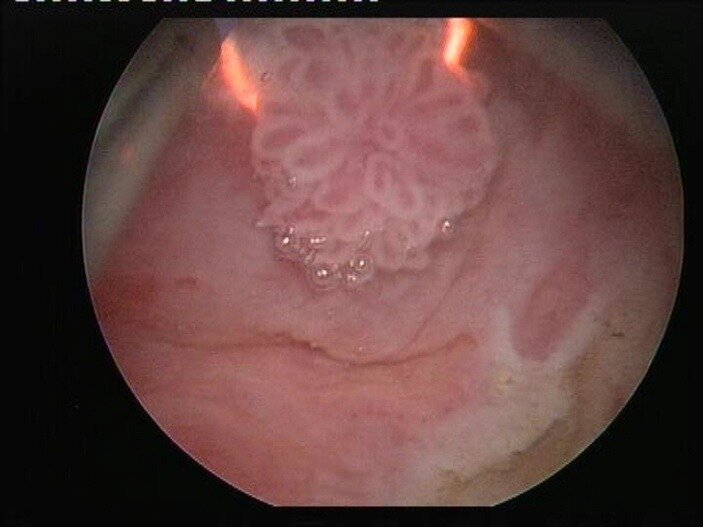Transurethral Resection of Bladder Tumours
Monopolar and Bipolar transurethral resection of Bladder Tumor with Narrow Band Imaging
Endoscopic treatment with transurethral resection of bladder tumor (TURBT) is the first-line treatment to diagnose, stage, and treat visible bladder tumors. In select patients, office-based fulguration of small tumors allows control of low-risk lesions without incurring the cost and inefficiencies of the operating room
According to Olympus, Narrow Band Imaging (NBI) is a powerful optical image enhancement technology that improves the visibility of blood vessels and other structures on the bladder mucosa. This makes it an excellent tool for diagnosing bladder cancer during cystoscopy.
White light is composed of an equal mixture of wavelengths. The shorter wavelengths only penetrate the top layer of the mucosa, while the longer wavelengths penetrate deep into the mucosa. NBI light is composed of just two specific wavelengths that are strongly absorbed by haemoglobin.
The shorter wavelength in NBI is 415 nm light, which only penetrates the superficial layers of the mucosa. This is absorbed by capillary vessels in the surface of the mucosa and shows up brownish on the video image. This wavelength is particularly useful for detecting tumours, which are often highly vascularised. The second NBI wavelength is 540 nm light, which penetrates deeper than 415 nm light. It is absorbed by blood vessels located deeper within the mucosal layer, and appears cyan on the NBI image. This wavelength allows a better understanding of the vasculature of suspect lesions.



